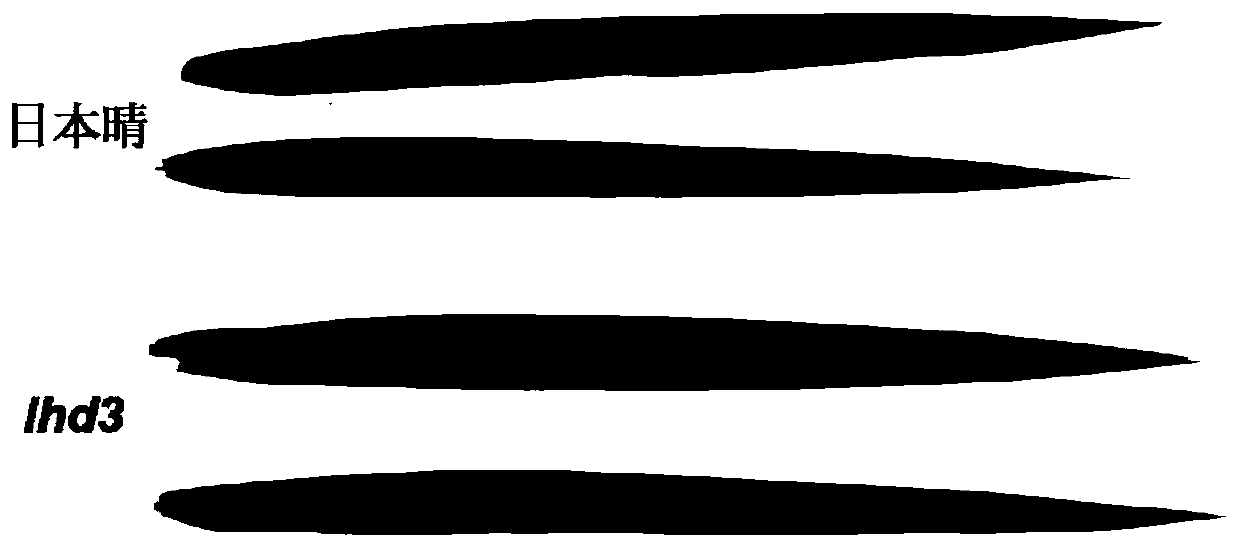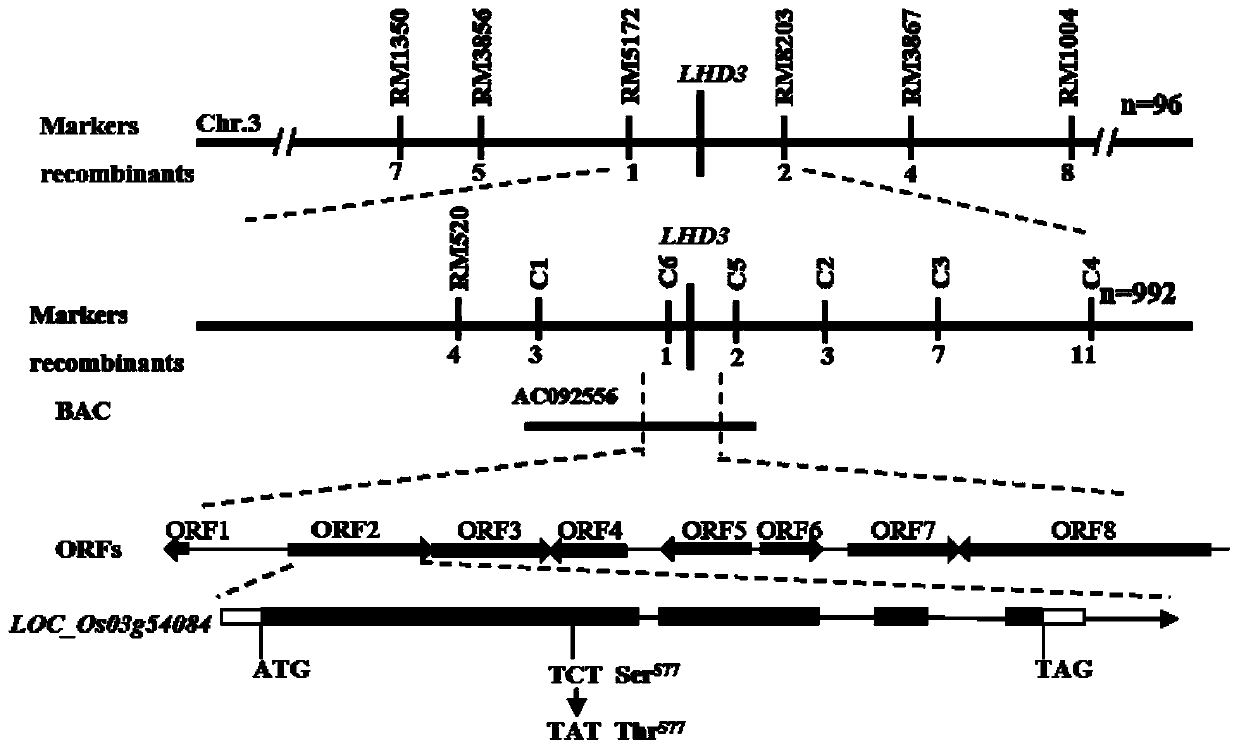Rice flowering related protein and coding gene LHD3 thereof and application thereof
A protein and rice technology, applied in the fields of application, genetic engineering, plant gene improvement, etc., can solve the problems of ignorance of functional research, poor understanding of phytochrome C, limited resources of phytochrome C mutants, etc., and achieve the effect of broad application prospects
- Summary
- Abstract
- Description
- Claims
- Application Information
AI Technical Summary
Problems solved by technology
Method used
Image
Examples
Embodiment 1
[0019] Embodiment 1. Obtaining and phenotypic analysis of mutant materials
[0020] Through EMS chemical mutagenesis of the japonica rice variety Nipponbare, a mutant lhd3 with a severely delayed heading date was screened, and the traits of this mutant have been stably inherited through multiple generations of selfing. The flowering time of the mutant was 197 days under long-day conditions and 145 days under short-day conditions, while the flowering times of normal Nipponbare rice were 90 days and 81 days, respectively. In addition, compared with the wild type under field conditions, the mutant also had lighter leaf color, and the chlorophyll content of the mutant was significantly lower than that of the wild type Nipponbare. All rice materials were planted in the experimental field of Jiangxi Agricultural University in Nanchang City, Jiangxi Province and the southern propagation base of Jiangxi Agricultural University in Sanya City, Hainan Province, under routine management. ...
Embodiment 2
[0022] Embodiment 2, population construction and genetic analysis
[0023] In order to avoid the influence of genetic background differences on heading, the mutant lhd3 was crossed with japonica rice varieties Nipponbare, Zhonghua 11 and Wuyunjing 7, and F 1 The plants all showed normal heading phenotype, which indicated that lhd3 was controlled by recessive nuclear gene. Statistics F 2 Segregation population segregation ratio (table 1), result shows, the segregation ratio of the plant of normal phenotype and the plant of late heading phenotype is close to 3:1 segregation through chi-square test, and this shows that the waxy reduction of lhd3 and premature senescence phenotype are caused by One-to-one single recessive nuclear gene control.
[0024] Table 1 Genetic analysis of rice brittle stalk mutant lhd3
[0025]
[0026]
Embodiment 3
[0027] Embodiment 3, fine mapping of LHD3 gene
[0028] In order to ensure the polymorphism of molecular markers, we selected the indica rice variety TN 1 Crossbreed with mutants to construct targeting populations. To avoid genetic differences affecting heading date sampling, we set the F 2 The extremely late heading individual plants were selected from the population for location. Using the SSR primers evenly distributed on the 12 rice chromosomes preserved in our laboratory to pair mutants with TN 1 Perform polymorphism screening. Then use 21 lhd3 / TN 1 Middle F 2 Linkage analysis was performed on the middle and extreme late heading single plants to preliminarily confirm the chromosomal position of the target gene. Genomic DNA was extracted by CTAB method. Specific steps are as follows:
[0029] ①. Weigh 0.1g of rice leaves and grind them into powder with liquid nitrogen, then add 600 μL of CTAB solution (2% (m / V) CTAB, 100mmol / L Tris-Cl, 20mmol / L EDTA, 1.4mol / L NaCl ...
PUM
 Login to View More
Login to View More Abstract
Description
Claims
Application Information
 Login to View More
Login to View More - R&D
- Intellectual Property
- Life Sciences
- Materials
- Tech Scout
- Unparalleled Data Quality
- Higher Quality Content
- 60% Fewer Hallucinations
Browse by: Latest US Patents, China's latest patents, Technical Efficacy Thesaurus, Application Domain, Technology Topic, Popular Technical Reports.
© 2025 PatSnap. All rights reserved.Legal|Privacy policy|Modern Slavery Act Transparency Statement|Sitemap|About US| Contact US: help@patsnap.com



